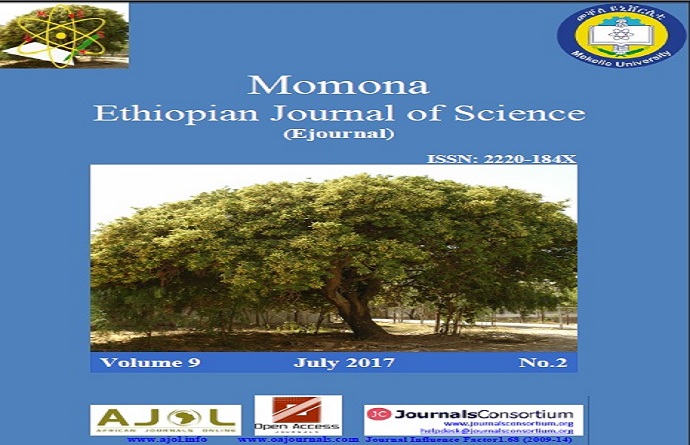Geological and Geomechanical Properties of Abraha-Atsibha and Wukro rock-hewn churches and its surroundings, Tigray Region, Northern Ethiopia
Abstract
Globally well-known ancient rock-hewn churches are present in Ethiopia in general and particularly in the central and eastern parts of Tigray regional state. They are important sites of heritage and tourism. Most of them are facing destabilization problem in different degree due to natural and anthropogenic factors. Among the affected, two churches hewn into sandstone located near Abreha-Atsibaha and Wukro (Kirkos/Cherkos church) in Tigray region were chosen for detailed study in terms of geological and engineering geological condition of the rocks in to which they are hewn. Both of them are affected by weathering and seepage. Both are carved into Mesozoic Adigrat sandstone that occupy higher elevations in topography, red in color and with iron and silica-rich alternating bands. Petrographic data suggest that the rock is dominated by quartz followed by feldspars; opaque and heavy minerals; pore spaces and carbonate/iron/silica cement. The rock is characterized by low to medium unconfined compressive strength. The alternating bands with varying mineralogical composition differ in mechanical properties and are responding differently to weathering and erosion. This is resulting in the development of minor spalling, pitting etc in the pillars, walls and roofs of the churches. Keeping the geological condition in view remedial measures are to be planned to minimize deterioration with time.
References
Asrat, A & Ayallew, Y. 2011. Geological and geotechnical properties of the medieval rock hewn churches of Lalibela, Northern Ethiopia.Journal of African Earth Sciences, 59: 61-73.
Asrat, A., Demissie, M& Mogessie, A. 2009. Geotourism in Ethiopia: Archaeological and Ancient Cities, Religious and Cultural Centers (Yeha, Axum, Wukro, Lalibela), SHAMA Books, Addis Ababa, 186p.
More inside the PDF
Copyright (c) 2018 Momona Ethiopian Journal of Science

This work is licensed under a Creative Commons Attribution 4.0 International License.
COPYRIGHT AND LICENSE POLICY
The Momona Ethiopian Journal of Science accepts the manuscripts for consideration with the understanding that the manuscript has not been published and is not under consideration for publication elsewhere. Only original articles will be considered for publication if they have been published previously as abstracts, but not if they have been published previously as extended abstract (>1000 words). This applies to both electronic and print versions of the journal. The authors should assign copyright ownership to the Editorial Office of MEJS in the event that the manuscript is accepted for publication in the Momona Ethiopian Journal of Science. All accepted manuscripts must be accompanied by a copyright statement signed by all authors. A copy of the copyright form will be supplied along with the final reviewed version of the manuscript that is sent for final proof- reading. Authors may make multiple copies of the form if necessary and send to the Editorial Office with author’s signature(s) even individually.
All articles published by Momona Ethiopian Journal of Science (MEJS) are Open Access under the Creative Commons Attribution License (http://creativecommons.org/licenses/by/4.0). Under this license, authors retain ownership of the copyright for their content, and anyone can copy, distribute, or reuse articles as long as the author and original source are properly cited. In all these cases for re-use, the authors will be given proper credit to the original publication in MEJS.
